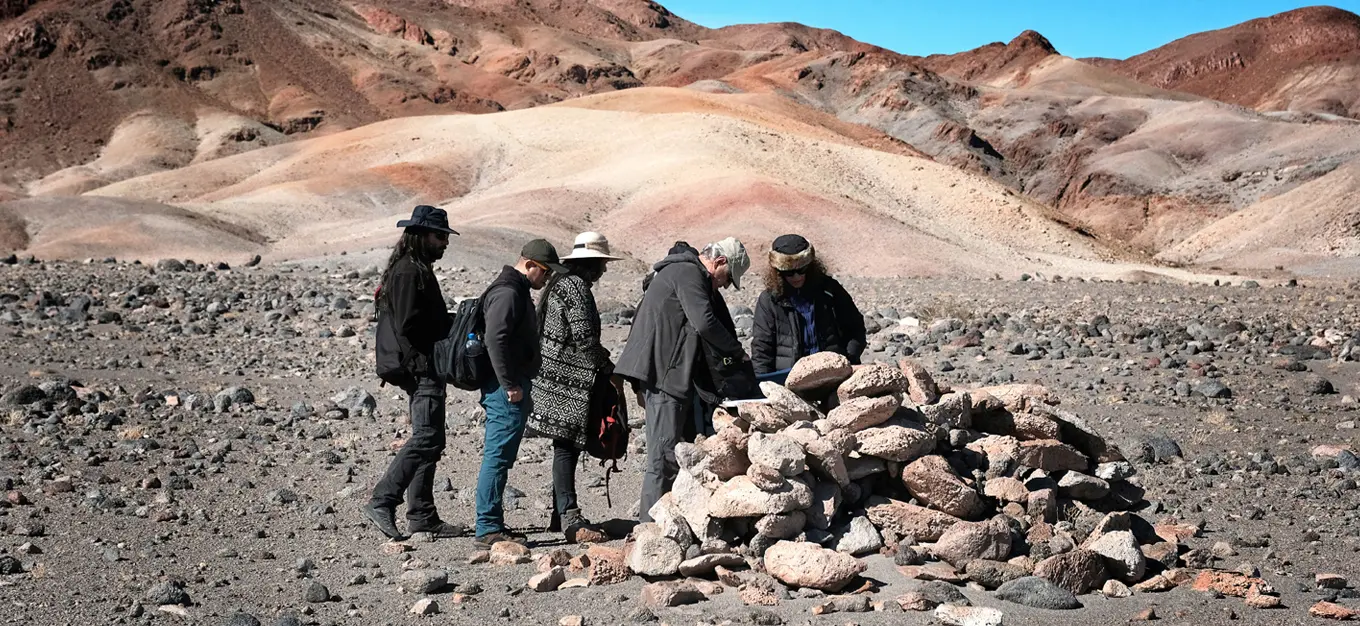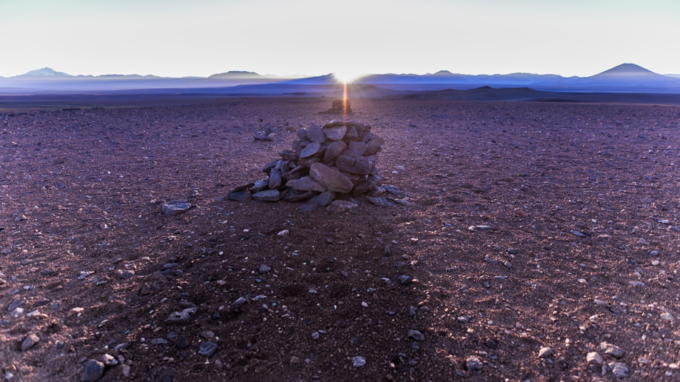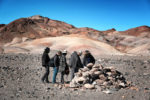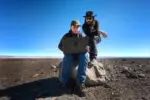Researchers supported by ALMA identify Inca calendar in the Atacama Desert
A multidisciplinary team made up of archaeologists, historians, and documentalists from the Chilean Museum of Pre-Colombian Art, supported by ALMA astronomers and an Atacameño researcher (Jimena Cruz), ascertained the existence of astronomic structures -saywas- in the Atacama Desert, bordering the Inca Trail. This discovery reveals that, far from being an “empty void,” this desert continues to be a place loaded with of sacred significance.
Through the shadow they project on the ground during sunrise, the saywas, stone structures built by the Incas, identify and predict equinoxes, solstices and other astronomic events.
In the early morning of March 21, 2017, in the town of Vaquillas, at 4,200 meters above sea level in the inner mountain range of the city of Taltal, a group of scientists, led by Cecilia Sanhueza, associate researcher for the Pre-Colombian museum, was able to verify firsthand the exact alignment of two central saywas with the sunrise point at the autumn equinox. Later, at dawn on June 21, in the Ramaditas sector near the Loa river, the same team witnessed the winter solstice sunrise, perfectly aligned with two saywas measuring 1.20 meters high.
Both experiences proved the hypothesis on location that the saywas are astronomic markers and are aligned with relevant dates in the Inca calendar.
“The alliance between the Pre-Columbian Museum, the ALMA Observatory, and BHP/Minera Escondida has made this research possible, revealing an unknown aspect of the Inca Trail,” says Carlos Aldunate, director of the Pre-Columbian Museum and one of the archaeologists involved. The saywas, stone structures described by chroniclers in 16th and 17th-century documents, had not been identified previously anywhere else along the Inca Trail. “Everything that has to do with the Pre-Colombian culture, in general, is very important to us, and this even more so, as it is located on current Chilean soil,” adds Aldunate.
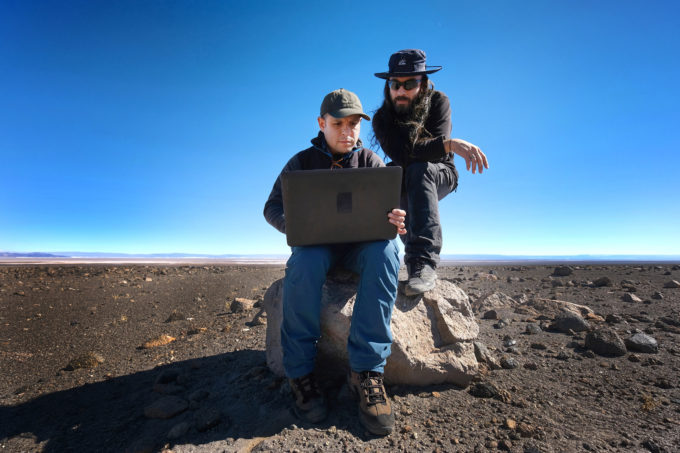
Juan Cortés and Sergio Martin, ALMA astronomers working on the field to determine the alignment of the saywas with the Sun and with different constellations. Credit: R. Bennett - ALMA (ESO/NAOJ/NRAO)
The study of ancient Quechua and Aymara dictionaries led the project’s lead historian, Cecilia Sanhueza, to examine the relationship between the saywas and the Incan astronomic system. “Cusco was surrounded by columns which were used to measure time, create calendars, and predict equinoxes and solstices, as well as the planting and harvesting season. What was interesting was finding these astronomic saywas along the Inca Trail, outside the major cities in unpopulated areas with no other apparent movement,” explains Cecilia Sanhueza.
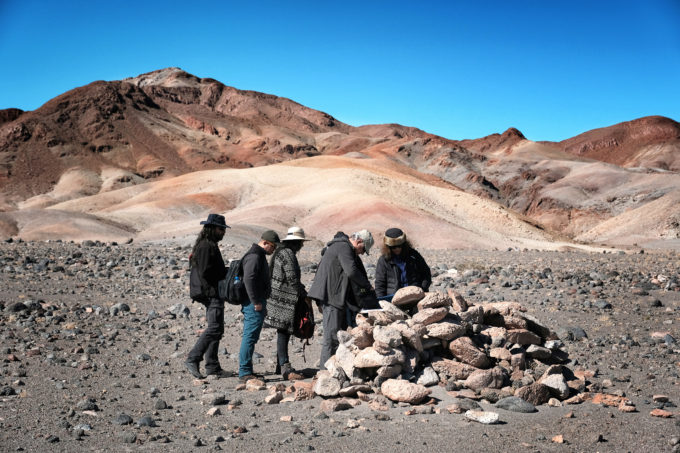
Sergio Martin (ALMA), Juan Cortés (ALMA), Ximena Cruz (San Pedro de Atacama Community), José Berenguer (Museo Precolombino's curator) y Cecilia Sanhueza (Historian, Leader of the project) analizing and geo tagging a Saywa in Camar. Credit: R. Bennett - ALMA (ESO/NAOJ/NRAO).
The ALMA observatory engaged in the project through its astronomers Sergio Martin and Juan Cortés, who were able to verify firsthand the incredible precision in the prediction of natural phenomena through supposedly primitive tools used by the Inca culture over 500 years ago. “As an astronomer, it was very gratifying to see these true solar calendars known as saywas, because these show that Pre-Colombian communities placed as much, if not more, importance on the sky as we do today,” shares Juan Cortés. “And the most incredible thing is that these are not far from the current location of the Atacama Large Millimeter/submillimeter Array (ALMA), which reaffirms that this is and has been a key location for astronomic observation."
Why did they come to this unpopulated area, so far south, to construct these stone columns? This is one of the mysteries that this team led by the Pre-Colombian Museum hopes to unravel to better understand why astronomy in these desert spaces was so important to the Incas.
Cecilia Sanhueza and José Berenguer will present the results of their research “Desert Navigators: When the sky becomes part of the journey” at Puerto Ideas, Antofagasta, on April 15 at 16.30h. The results will also be on exhibit during the first half of the year in San Pedro de Atacama. And the final report will soon be available at the Museo de Arte Precolombino website.
Contacts
-
Valeria Foncea
Education and Public Outreach ManagerJoint ALMA Observatory Santiago - ChilePhone: +56 2 2467 6258Cel: +56 9 7587 1963Email: [email protected]
